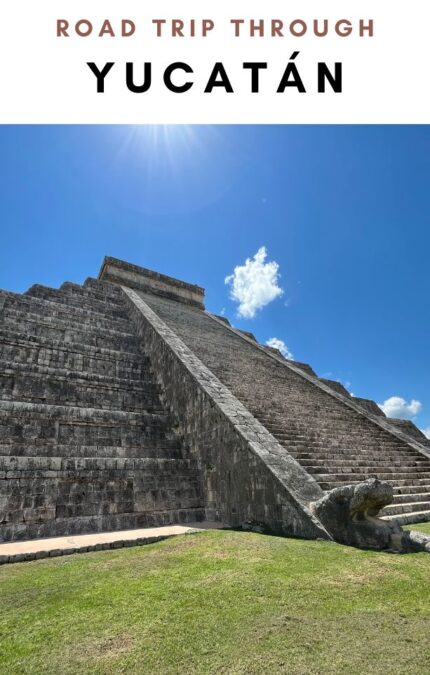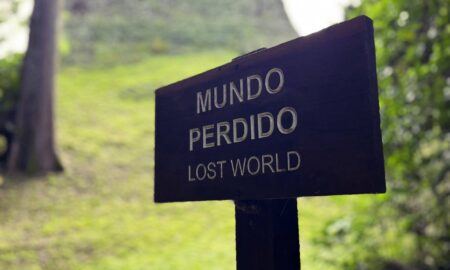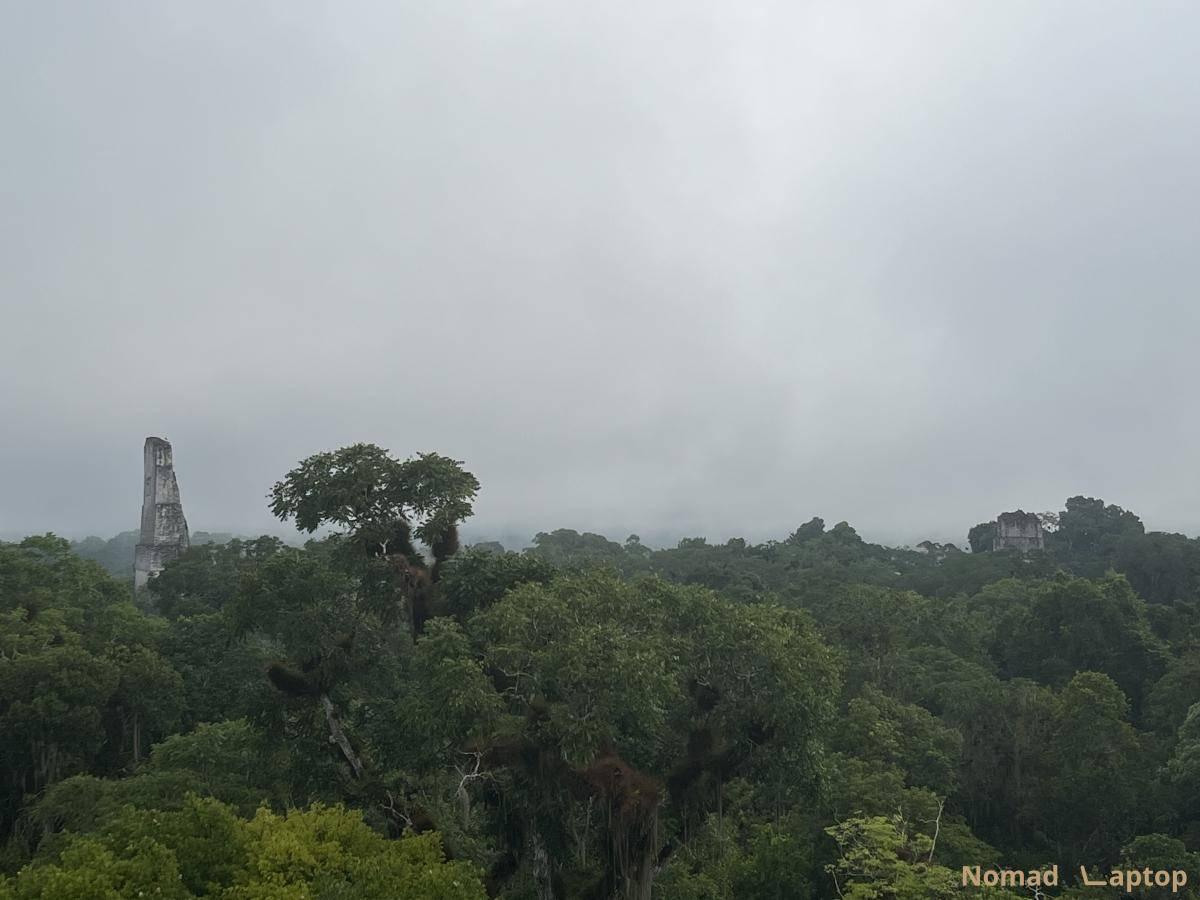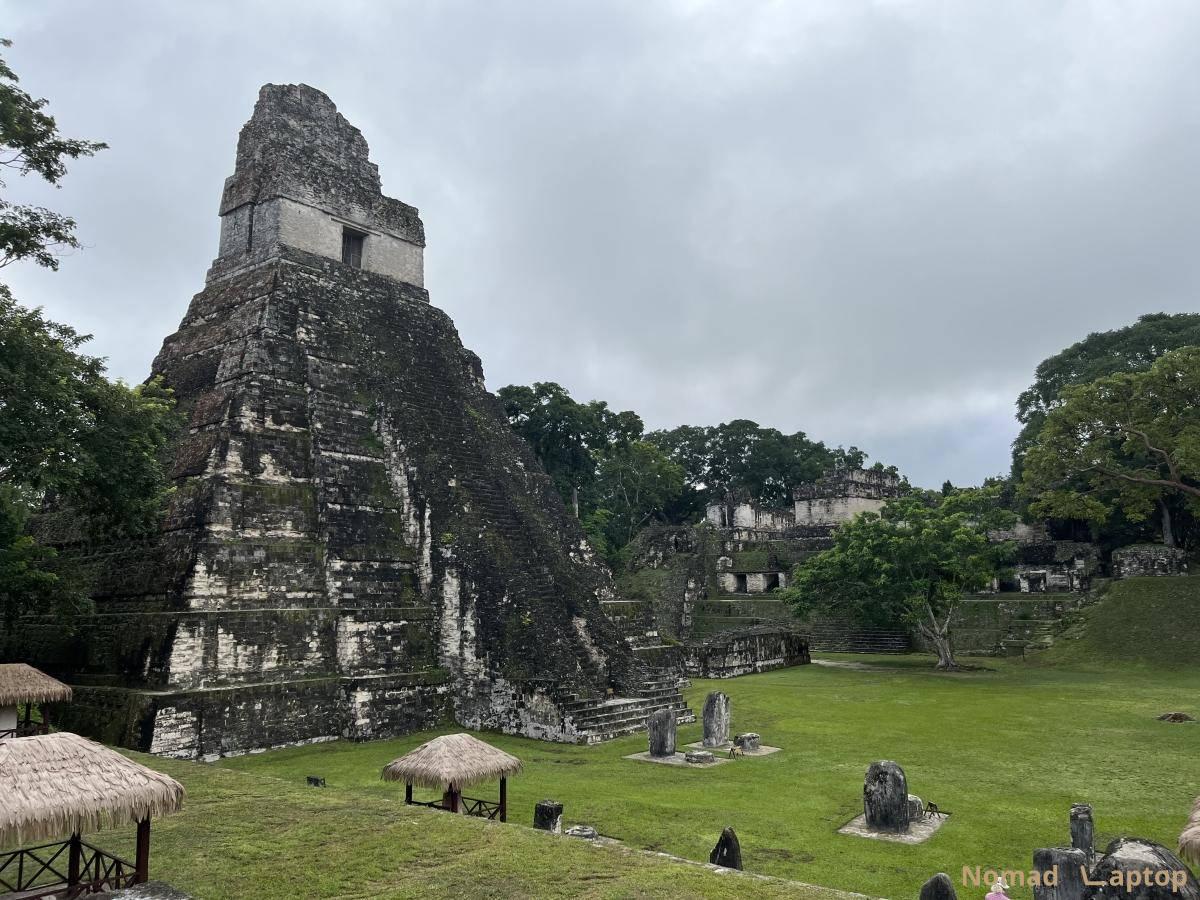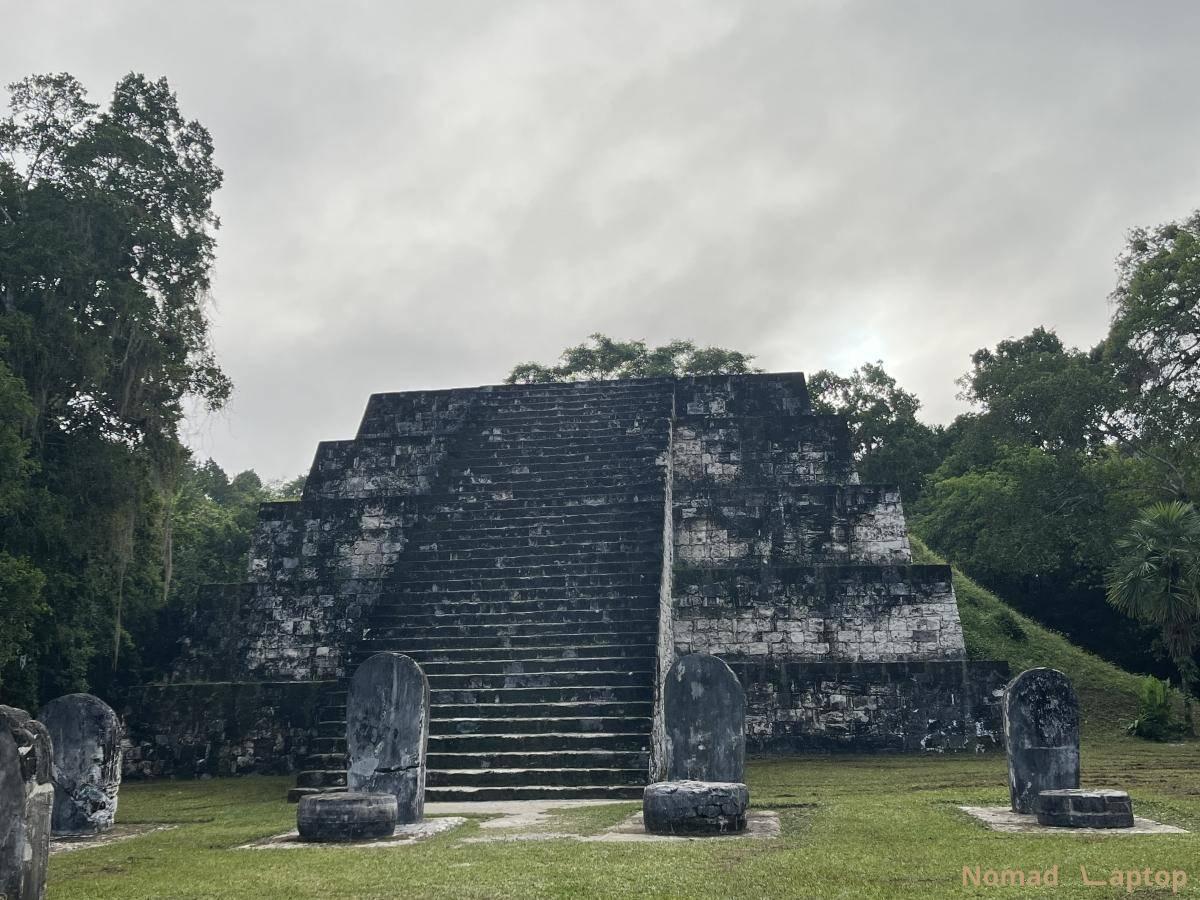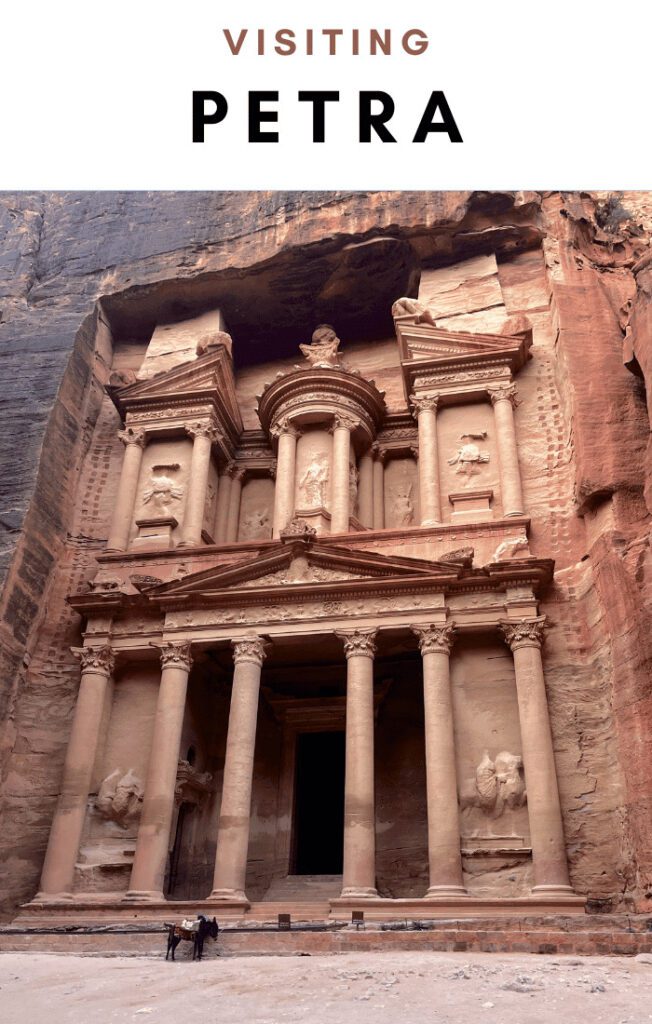One of the most overused and frankly meaningless words used when traveling is “hidden gem”. In today’s age, almost nothing is a hidden gem. However, the ancient city of Tikal in Guatemala fits this description perfectly, in the sense that it is a wonderful archaeological gem and that it is deeply hidden and shrouded in the country’s jungle. There is something almost magical about Tikal.
It is by no means a “secret” destination as it is the most popular tourism destination in the country. Tikal is arguably the most famous ancient Mayan city. Like many other Mayan archaeological sites, it lies within the jungle, similar to Caracol and Calakmul.
Tikal is one of the most awe-inspiring places on the planet. Walking around the remains of this once-great city gives a sense of being transported back in time which I experienced in very few other places.
For more information, check out this article on my Mexico Road Trip
Here you will find the most important information on how to get the most out of your visit to Tikal, and some tips from my experience.
Basic info
Tikal is an ancient Mayan city located in northern Guatemala, in the Peten department, within the jungle of the large Tikal National Park.
It is a giant settlement both in terms of extension and importance. At its peak it was one of the most populated cities in the world before suddenly collapsing.
About
The city of Tikal dates as far back as 400 B.C., but like most Mayan cities, it reached its peak during the classic period (200–900 A.D.). It is commonly accepted amongst archaeologists that the most significant event of the classic period was the war between Tikal and the rival, mutually allied cities of Caracol and Calakmul, who defeated it in 562. In the post-classic period, all of these cities collapsed, and it is generally considered a period of decline before the resurgence of Mayan centers of power such as Chichen Itza or the rise of other powerful Mesoamerican civilizations (i.e., Aztecs and Incas).
Tikal was never discovered by Cortes during the Conquista and at its height it is estimated to have housed up to 100 thousand people.
The Site

Tikal comprises 576 km2 or 222.4 mi2 of lush jungle surrounding the Maya ceremonial center.
The complex has 6 major pyramids. Altars and stelae can be found everywhere as well as the sacbe roads.
There are 4 main areas of the city: the great plaza, with two pyramids overlooking it and surrounded by two acropolis, the plaza of the 7 temples, several offspringing paths leading to smaller twin pyramid plazas, temple IV (highest and rising 70mt above ground) at the end, and the lost world, which was my favorite area, with the lost world pyramid (31mt), where I spent most of the early morning, just admiring the structures rising from the jungle canopy.
Due to the rain in the middle of the morning, I also got to appreciate the sacbe – the limestone roads which are present in every Mayan city and which allow transport across the rainforest mud.
Check out the official site for additional information http://www.tikalpark.com
Getting there
The closest town is Flores, in the Peten region, 1/1.5h hours from the park.
By air: The Mundo Maya International Airport in Flores has flights from Cancun in Mexico or from Guatemala City.
By car: Flores can be reached from Belize it’s 2.5 hours from San Ignacio. From Mexico, the closest border crossing is at El Ceibo, 3h away.
When close to the park, the final stretch of road needs an additional separate pass which also needs to be paid in cash. The road is straight and perfectly paved and will take a while only because of the strict slow speed limit (you will be given a paper slip with entrance time when entering which will be checked when you arrive at the parking to see if you went too fast). The speed limit is to protect the potential road-crossing fauna of the forest.
Trivia pill
In Tikal, some shots were filmed for the iconic first Star Wars movie, Star Wars: A New Hope. In the movie, there are shots of the Millennium Falcon leaving from the moon, Yavin 4, as a rebel officer looks onto the forest-covered landscape. These were taken from the top of Site IV with overlooks of Sites I, II, and III. So unimaginatively, Yavin 4 is simply Site 4.
Entrances & Getting around
Once at the proper entrance of the park, there is a single way in. Around the entrance is the museum and several shops selling souvenirs or refreshments or restaurants.
Inside, there are many ways to explore the park as can be seen in the map in the Site overview section above and this is arguably one of the best things about Tikal and the possibility to explore it without a well-defined linear route.
Prices
Take note: Credit cards are not accepted
From the road entrance to Tikal which requires payment in cash, any subsequent shop, cafe, ticket entrance, etc. all require cash payments. There are no ATMs so it is best to withdraw at an ATM in Flores.
Entrance Tickets
Until recently tickets had to be bought at the counter but from 2023 they can be purchased online here: https://boletos.culturaguate.com/
Adult tickets for foreigners cost 150 GTQ (about $20 USD).
Children under 12 can enter Tikal free of charge.
If you sign up for a sunrise tour and enter the park before 6:00 AM, the ticket fee is 250 GTQ.
Tickets purchased after 3:00 PM are also valid for the next day.
In addition, if reaching the site by car, the road pass leading to the entrance requires an additional toll of 50 GTQ.
Best time to visit
Season
The best season to visit Tikal is during the dry season which runs from December to April. There is less rain, leading to less humidity, more sun, and less covering clouds. Because of the reduced humidity the perceived heat is also lower
Contrarily from May to November will present more clouds and higher humidity. I visited in October and the heat was quite unforgiving but it was my sixth visit to Mayan ruins so I had grown some resistance to the jungle steam.
Opening hours
Tikal National Park is open daily for visits from 6:00 AM to 5:00 PM.
Sunrise and sunset
As mentioned in the prices section, there are tickets to visit Tikal before the 6 a.m. opening or after the 5 p.m. closing.
Tikal in the morning
I couldn’t recommend enough to visit Tikal as soon as it opens. It’s not so much to avoid the crowds, as the park is large and doesn’t suffer from many people, but from experiencing the site as the surrounding forest “wakes up”.
Walking in the Guatemalan jungle surrounded by the morning dew, the howling monkeys, birds, and rodents that will later hide during the day, and being surrounded by these still, ancient structures protruding from the morning mist gives a completely different experience. It may make for worse pictures without the sun completely illuminating and drying out the humidity, but the experience is manyfold better.
Tikal by Day
Obviously, most people visit during the day and this is the standard way to see Tikal. The sun breaches through the clouds and illuminates all monuments.
Clothing/Gear
Tikal is literally in the jungle so it gets really hot and humid. Hats and sunglasses, and plenty of water to rehydrate from the sweat are important.
To climb the temples comfortable shoes are also a must.
Like everywhere it depends on the time of the day but the mosquitoes can range from a nuisance to an unsufferable carnage. Insect repellent is fundamental.
When it comes to photography equipment, drones are not allowed at the park
Weather
As mentioned the region is hot and humid, with average temperatures between 17° and 25°C. That would be bearable if it wasn’t for the humidity which on average is 85%
Flora & Fauna
The jungle presents all the most vivid tonalities of green imaginable and the ruins themselves are wonderfully encased and enveloped in a moss carpet.
As far as fauna is concerned, the forest greets visitors with many small mammals, from squirrels to armies of white-nosed coati rummaging around, especially in the early mornings. Curiously there aren’t many iguanas as can be found in all other Mayan archaeological ruins. During the day many turkeys can also be found strutting around. There aren’t any bodies of water within the park itself but at the exit near the museum, there is a small pond presumably inhabited by crocodiles. Being the jungle snakes are also present although they clearly stay away from the crowded park.
The most recognizable and impossible-to-miss animal are the Yucatan howler monkeys (which I simply call hell spawns). Their raucous and guttural howls at various intervals of the day are not only deafening and can be heard all around the jungle but are also unsettling. When one howler starts, be prepared for the entire surrounding jungle to awake in an orchestra of howling responses.
Guides
As in all archaeological destinations, tours and guides can be booked and organized. From my anecdotal experience though I saw a vast majority of unaccompanied solo, couple, or family visitors.
I personally believe though that for this visit it is better to document oneself beforehand about the various sites and then lose oneself in the city rather than having a well-defined and guided route. Walking around the huge city in a relatively aimless manner creates an experience of traveling back in time and being a citizen of this ancient lost city.
